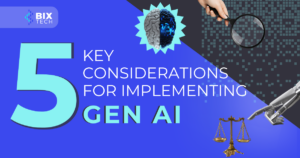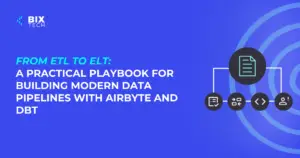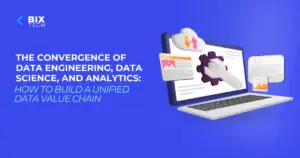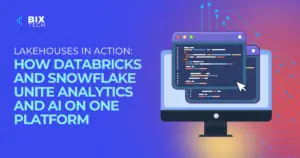The Ultimate Guide to Modern Software Development: Trends, Best Practices, and Business Impact

Sales Development Representative and excited about connecting people
Software development has evolved dramatically in recent years, becoming the backbone of digital transformation across every industry. Whether you’re building a groundbreaking mobile app, automating your business processes, or revolutionizing customer experiences, understanding the nuances of software development is essential for success in today’s fast-paced market.
In this comprehensive guide, we’ll break down what modern software development really means, highlight key trends, explore best practices, and offer actionable insights to help your business thrive. Let’s dive in!
What is Software Development?
At its core, software development is the process of designing, creating, testing, and maintaining applications or systems that solve specific problems or fulfill user needs. It encompasses everything from planning and coding to deployment and ongoing support.
Key Stages of the Software Development Lifecycle (SDLC)
- Requirement Analysis: Understanding business needs and defining the project scope.
- Design: Architecting the application’s structure and user experience.
- Implementation (Coding): Writing the code, often collaboratively.
- Testing: Identifying and fixing bugs, ensuring quality and performance.
- Deployment: Releasing the product to users.
- Maintenance: Ongoing updates, bug fixes, and new features.
Each stage is crucial for delivering robust, scalable, and user-friendly software solutions.
Trends Shaping Software Development in 2025 and Beyond
Staying ahead in software development means embracing innovation. Here are some of the most influential trends shaping the industry:
1. Artificial Intelligence and Machine Learning Integration
AI is transforming software development, enabling smarter features like predictive analytics, natural language processing, and intelligent automation. AI-powered tools can even assist developers in writing code more efficiently.
To see how AI is revolutionizing business, check out AI-driven innovations in software development.
2. Cloud-Native and Serverless Architectures
Cloud services and serverless computing have made software more scalable, cost-effective, and easier to deploy globally. Businesses can now focus on building features rather than managing infrastructure.
3. Agile and DevOps Methodologies
Agile and DevOps practices foster collaboration, faster releases, and continuous improvement. These methodologies break down silos between development and operations teams, leading to more resilient and adaptable products.
Learn how to unlock efficiency in your projects with our Unlocking Efficiency: Scrum Guide.
4. Low-Code and No-Code Platforms
With low-code and no-code solutions, non-developers can build applications through intuitive interfaces, reducing the burden on IT and accelerating digital transformation.
5. Enhanced Cybersecurity
As cyber threats grow, secure coding practices, automated testing, and compliance with global standards have become integral to safe software development.
Best Practices for Successful Software Development
Delivering exceptional software requires more than just writing code. Here are some industry-proven practices:
1. Start with Clear Goals and Requirements
Before a single line of code is written, ensure that everyone understands the business objectives, user needs, and technical requirements. Well-defined goals prevent costly misunderstandings later.
2. Embrace Agile Development
Adopting an iterative, incremental approach allows you to deliver value quickly, adapt to change, and continuously improve your product.
3. Prioritize User Experience (UX)
Intuitive interfaces and seamless workflows are no longer optional—they’re expected. Invest in UX research and design to delight users and reduce churn.
4. Automate Testing and Deployment
Automated tools for testing and deployment catch bugs early, ensure consistency, and accelerate releases.
5. Foster Collaboration and Communication
Effective communication—between developers, stakeholders, and end users—is the glue that holds successful projects together.
How Software Development Drives Business Value
Modern software development isn’t just about technology—it’s about solving real business problems and unlocking new opportunities. Here’s how:
- Operational Efficiency: Automate repetitive tasks, streamline workflows, and reduce manual errors.
- Customer Engagement: Deliver personalized experiences, faster support, and innovative features.
- Data-Driven Insights: Build solutions that collect, analyze, and visualize key metrics for smarter decision-making.
- Competitive Advantage: Rapidly adapt to market changes and launch new products ahead of the competition.
For a deeper dive into how data science and software development intersect to revolutionize business, explore our article on The Data Science Business Revolution.
Real-World Examples
- E-commerce: Custom platforms with integrated payment gateways and recommendation engines boost sales and retention.
- Healthcare: Mobile apps for patient engagement, telehealth, and data analytics improve outcomes and efficiency.
- Finance: Secure, scalable FinTech apps automate transactions, fraud detection, and compliance.
Conclusion: Building for the Future
Software development is a dynamic field, blending creativity, technology, and strategy. To succeed, businesses must embrace innovation, follow best practices, and always keep user needs at the center of their efforts. Whether you’re launching a startup or modernizing an enterprise, investing in effective software development is the key to unlocking your organization’s full potential.
Ready to start your next software project or want to learn more? Explore our resources, or reach out for a personalized consultation.
Further Reading:
Stay tuned for more insights on the future of software development and digital transformation!









